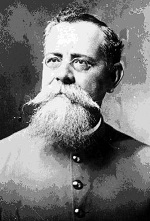MEXICO
VENUSTIANO CARRANZA

Venustiano Carranza was born in 1859 near Cautro Ciénegas, in the Mexican state of Coahuila, one of 15 children. His father was a retired army colonel who served under Benito Juárez. After primary school and attending the National Preparatory School at Mexico City, he returned home to work as a rancher. In 1887 he married his wife, Virginia Salinas.
Partly due to his family’s influence in the area, Carranza was elected as the mayor of Cautro Ciénegas in 1888, and served two terms through 1898.
After serving as mayor, he and three of his brothers joined the rebellion against the Coahuila Governor José Maria Garza Galán. This rebellion was against a perceived fraudulent reelection of Galán as governor of Coahuila. The president of Mexico’s proconsul for North-eastern Mexico was Bernardo Reyes, who was also the governor of the Mexican state of Nuevo León. Having been directed to take care of the rebellion issue, Bernardo Reyes worked closely with the Carranza on the issue Reyes eventually appointed a new governor to Coahuila sate, José María Múzquiz.
From working together on the rebellion, Reyes and Carranza became friends and with the help of Reyes, Carranza’s political career took off. He was soon appointed to the state legislature, became a federal deputy, senator, and then was appointed as the provisional governor of Coahuila in 1908.
Carranza desired to become the elected governor, but failing to get support from President Díaz, Carranza allied himself with the revolutionary Francisco Madero. Madero’s book “La sucesión presidencial en 1910” (“The Presidential Succession in 1910”), despite it’s having a simple a reformist tone, fueled the flames of dissidence against President Díaz, whose reign had become a dictatorship by that time. Carranza was with Madero at the siege of Ciudad Juárez in 1910 and Madero appointed Carranza the Minister of War. Madero was able to negotiate the resignation of President Díaz and served as president from 1911 – 1913.
By 1911, Carranza had been elected the Governor of Coahuilla, but his alliance with Madero had strained. When Victoriano Huerta overthrew Madero in February 1913, Carranza attempted to bring out support from other state governors and restore the constitutional government. In March Carranza unveiled the Guadalupe Plan, a declaration of civil war, which opposed Huerta and his supporters. Supporters of the Carranza’s plan included Zapata, Pancho Villa and Álvaro Obregón. After losing several battles Huerta finally bowed to pressure and resigned the presidency in July of 1914 and on August 20th, 1914, Venustiano Carranza was sworn in as the President of Mexico. He also fought against his previous allies Villa and Zapata in their quest for dominance, and lack of acceptance for provisional governance, but they were eventually quelled by April of 1915 when General Obregón defeated the forces of Villa at Celaya. Carranza’s provisional presidency was then assured.
Carranza called for a new constitution to be drafted in 1916 and by 1917 he was elected to the presidency under the newly adopted constitution. Among other things, the new constitution reformed land ownership, controls of natural resources, and brought about new legislations for social and labor concerns, Carranza was not a proponent for these social reforms. His tenure as president saw little progress in these areas.
When Carranza’s presidential term was coming due Obregón, who had since left Carranza’s side, declared his candidacy for president. This was not good news to Carranza as he had already chosen a successor, the then ambassador to the US, Ignacio Bonillas. This was a wildly unpopular choice amongst the people, and there was soon a fierce campaign between Carranza and Obregón. This was an ugly campaign, and Obregón declared that he can only win by turning formally to arms. On May 5th, 1920 the capital was being shelled. Carranza fled the capital by train to Veracruz, but due to attacks that had disrupted the line, he had to flee the train at the Aljibes rail station near modern Puebla. Carraza decided to flee into the state of San Luis Potosi. Rodolfo Herrera, an army general during the revolution, met Carranza and his party and Herrera deceptively offered his protection and loyalty to Carranza. They journeyed to the settlement of Tlaxcalantongo and were given refuge in meager huts. That night Herrera’s men entered and shot President Carranza dead. He is buried at Monumento a la Revolución in Mexico City.
Upon hearing the news, Obregón denounced Herrera for treason and ordered him arrested. He was questioned in Mexico City, but not jailed until seven months later when he entered a military prison for only one week, and was removed of his rank. Obregón was elected president in December of 1921, and during his term he reinstated the rank of general to Rodolfo Herrera, who would only lose it again under the next presidency.

